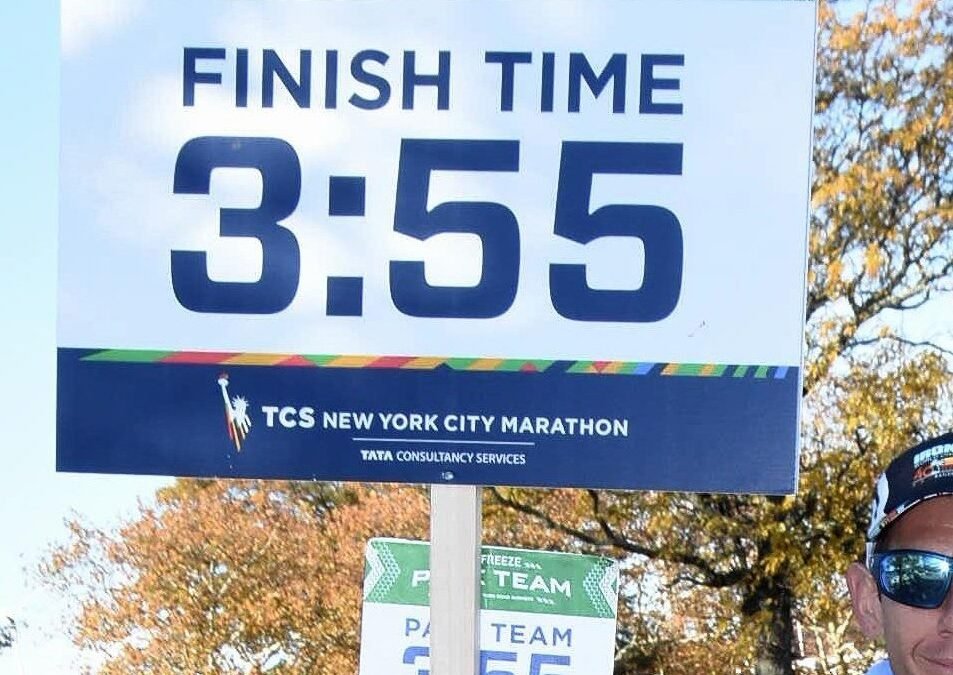
Is An Online Running Coach a Good Fit for Me?
By Coach Adolfo Salgueiro
Before I answer the question in the title, I want to answer something else: Is this a self-serving post? Yes. It is. I am a running coach. You are looking for one and have questions about how this works and whether it’s a good fit for you. I am here to provide you with answers. So, here we go.

If you Google “running coach,” as I just did, you will get over 300 million results. If you Google “marathon training plans,” the number is severely reduced to just 150 million. How are you supposed to sort through that? How will you find the right plan or coach that is a good fit for you?
A runner I coach told me once that a buddy of his stated that a running coach was a waste of money because you can download a free marathon plan from the internet. My client responded by saying: “It is more complicated than that. You need to know what you’re doing, and you must read about 40 books. My coach has the experience and has read them all. I don’t have time for that.”
According to a data study by RunnersConnect, runners with custom plans ran 10% faster. They were injured 36% less than those using basic, generic plans. If that wasn’t enough, they also achieved their goal 54% of the time, compared to 29% with stock programs.
It is essential to know that unless you live in your coach’s city or are part of their running groups, you will see very little of your coach in person, and you may never meet them. This is normal. The only coaches present at every one of their athletes’ sessions are either high school or college coaches or elite coaches. If you are searching for an online coach, most likely you don’t fit that description and your goals are different.
So, what are the advantages of hiring Foultips.Run as your running coach:
► Experience and Knowledge: I’m the head coach at Foultips.run with over 40 years of running under my belt. I hold an RRCA Level II certification, have completed over 150 races ranging from 5Ks to marathons, and I stay current on the latest scientific and physiological insights in the sport. To learn more about my background, click here. The coaches I work with are handpicked; each one personally vetted and backed by proven expertise.
► Individualized Plans: Downloadable programs are dime a dozen. Some free, some paid. Those programs, you must understand, are generic and do not consider neither your starting point nor your specific running goals. They apply equally to the Olympic swimmer transitioning to marathon training to the overweight middle-aged want-to-be runner just getting off the couch after 15 years. Additionally, they are not flexible and usually lack cross-training. Additionally, you won’t have access to the person who wrote it should a personalized adjustment be needed.

► Access to your coach: I cannot speak for other coaches, but with Foultips.run, your coach is a phone call or text message away. We pride ourselves on not just telling the runner what to do but educating them on why we recommend a specific workout or an extra day off. Access to your coach is the primary reason you chose an online coach over a downloadable static program.
► Tech platform: Foultips.run works with the FinalSurge software, which is included in the athlete’s monthly fee. This platform syncs with multiple fitness watches, allowing the coach to provide feedback based on all the performance parameters your watch records. This makes adjustments to optimize progress a common occurrence.
► Guidance: An athlete wishing to run needs a different level of guidance than an experienced runner pursuing another PR or returning after a hiatus. Your running coach has the necessary experience to understand the different stages of your journey, so you can be guided accordingly with the correct feedback and resources to navigate your process.
► Flexibility & Customization: You are not a professional athlete, and life will eventually get in the way. Maintaining a life/run balance is paramount, so sometimes runs need to be adjusted or shuffled. Sometimes it all needs to be scrapped and go back to the start
► Motivation, not cheerleading: While keeping the athletes motivated is vital, especially during the inevitable downturns of a running cycle, your running coach is not a cheerleader. They will guide you through thick and thin but will not sugarcoat it if you have screwed up. It is never a failure if you get a valuable lesson from it.
► To read what athletes have to say about their experience training with Foultips.run, click here.
► To read success stories about athletes who achieved their goals with our guidance, click here.
► To read our Google reviews, or with to leave one, click here.
Ready to get started with your online running coach? Leave a message below or send a message by clicking the WhatsApp logo icon at the bottom right of your screen.



